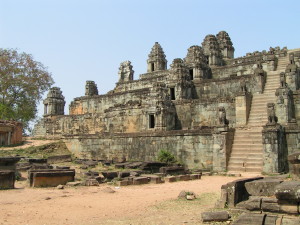
Presentation of Phnom Bakheng
Jackson Dedjou
3D modelling of the temple with AutoCAD
Dong Wei
Working with Blender
Christoph Hoppe
|
|
|
Phnom Bakheng
 Presentation Presentation
Presentation of Phnom Bakheng and the history
Phnom Bakeng is the first temple built on the site of Angkor at about year 900.
Thirteen hundred metres north of the western axial entrance to Angkor Wat and 400 metres south of the southern gate of Angkor Thom, to the west of the road, one can see a wide track in the forest ascending a natural hill of 60 metres in height. This is Phnom Bakheng, the centre of the first kingdom of
Angkor, or Yasodharapura, which formed a square of about 4 kilometres on each side and of which, travelling on the main road from Siem Reap, one crosses the double levee of earth forming its southern boundary - 600 metres before arriving at the moat of Angkor Wat.
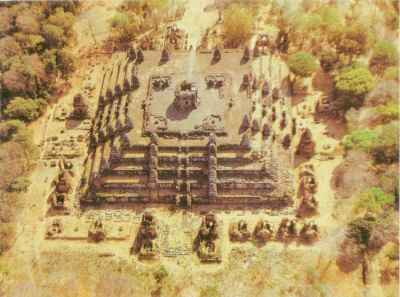
On his accession in 889, Yasovarman abandoned Hariharalaya (Roluos), the rudimentary capital of his predecessors situated on the plain, and became the first, seduced by the mysticism of the hills, to find his "Meru" (the seat of the gods) and his "Ganga" (the river Ganges) symbolised here in the hill of
Phnom Bakheng and the river of Stung Siem Reap - the latter probably being diverted to follow the eastern boundary of the new city.
As an imposing replica of the Bakong at Roluos, the temple of Phnom Bakheng, glorified by its choice position and prominence over the surrounding landscape, had yet further to assert its monumental character in order to justify its role as the base and shelter of the Devaraja - the linga Shri Yasodharesvara
of the inscriptions - the master-idol of the kingdom. So came the first realisation of a quincunx of sandstone towers crowning the upper level of the pyramid and the multiplication of secondary towers on the lower tiers.
Bakheng was a replica of Mount Meru and the number of towers suggests a cosmic symbolism.
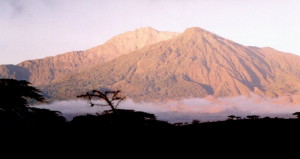
The seven levels of the monument (ground, five tiers, upper terrace) represent the seven heavens of Indra in Hindu mythology.
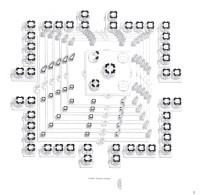
The temple must have been a spectacular site because originally 108 towers were evenly spaced around the tiers with yet another one, the central sanctuary, at the apex of them all.
Today, however, most of these towers have collapsed.
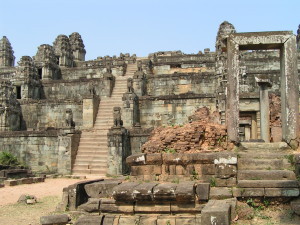
The pyramid consist of five levels and one additional smaller platform on the top.
On this upper platform there are five towers
At each side of the pyramid there leads a stair up to the center, where the big tower stands.
On each level there can be found numerous small towers, at regular intervals, next to the stairs and near the corners of the platforms.
Twelve towers stand on every step, so that arises
as a total number of 60. All these small buildings are opened to the east; therefore, some of them lead in the emptiness, while others look at the wall of the upper floor.
Afterwards passageways were build into the
east. These small towers count to the so-called
libraries. The complex entity is encircled with
Laterit stone which is 190 meters long and 120
meters broad
From available plans, we found necessary
to divide our work into four blocks.
the stair
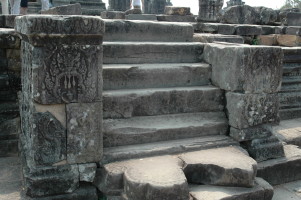
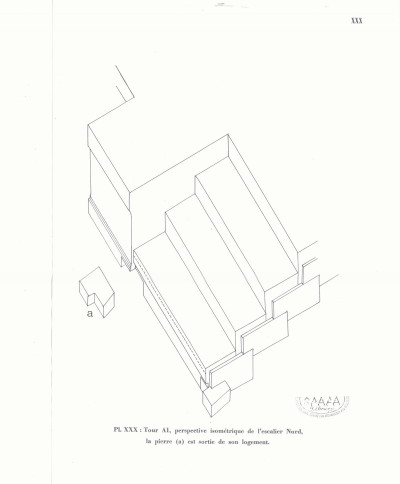
the flat form
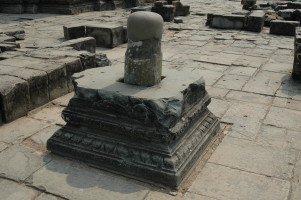

the small tower
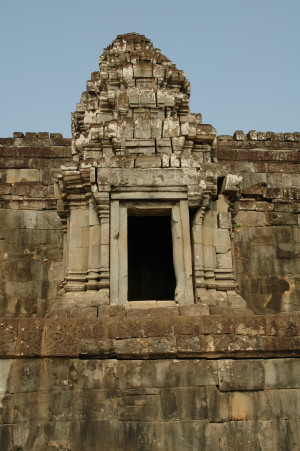
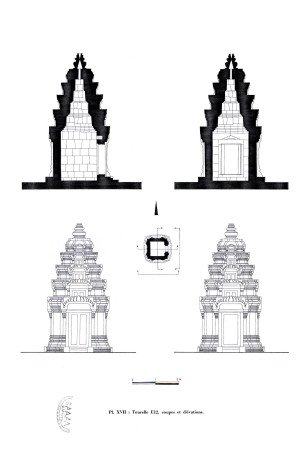
the tower in the summit
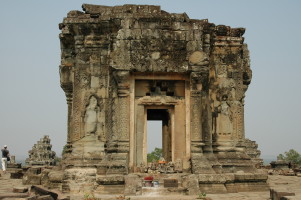
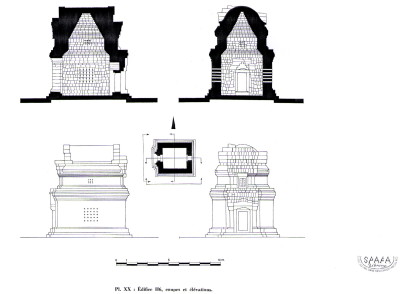
After the treatment of these stages in Autocad,
we exported them to Blender afterwards at the end of our modeling process.
I would now ask you to visit the stages detailed respectively by Dong Wei (Digitalization Vectorization Modeling) and
Christoph Hoppe (Exporting/Importing - Postprocessing Ojects - Texturing – Lighting - Animation )
Jackson Dedjou
|